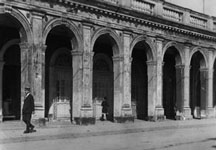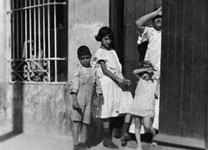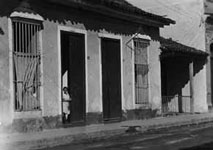The Atkins Family in Cuba: A Photograph Exhibit
Snapshots of Cienfuegos, Cuba
The Atkins Family Photographs contain dozens of snapshots of Cienfuegos, Havana, Trinidad, and other cities in Cuba, all taken ca. 1910-1920. Though the photographer is unidentified, they were probably taken by a member of the Atkins family. These snapshots provide a remarkable view of Cuba in the decades following the Spanish-American War.
These images of Cienfuegos are particularly striking. The town, which neighbored the Soledad plantation, was central to the business of E. Atkins & Co. In 1892, Edwin Atkins wrote to his mother about Cienfuegos's increasing prosperity, due to the business done by the large sugar estates in the area. He described in detail its electricity-run theater, caf?s, the recently renovated hotel, and the new houses being built throughout the village. "Cienfuegos has taken quite a step in improvement during the year past," Edwin wrote, "you would hardly recognize the town now; the shops have braced up and have quite an important air." These photographs, however, tell a different story. Taken nearly twenty years later, after the Spanish-American War and the American occupation of Cuba, they depict a quiet city struggling to restore its faded prosperity.
The Atkins Family Photographs contain dozens of snapshots of Cienfuegos, Havana, Trinidad, and other cities in Cuba, all taken ca. 1910-1920. Though the photographer is unidentified, they were probably taken by a member of the Atkins family. These snapshots provide a remarkable view of Cuba in the decades following the Spanish-American War.
These images of Cienfuegos are particularly striking. The town, which neighbored the Soledad plantation, was central to the business of E. Atkins & Co. In 1892, Edwin Atkins wrote to his mother about Cienfuegos's increasing prosperity, due to the business done by the large sugar estates in the area. He described in detail its electricity-run theater, caf?s, the recently renovated hotel, and the new houses being built throughout the village. "Cienfuegos has taken quite a step in improvement during the year past," Edwin wrote, "you would hardly recognize the town now; the shops have braced up and have quite an important air." These photographs, however, tell a different story. Taken nearly twenty years later, after the Spanish-American War and the American occupation of Cuba, they depict a quiet city struggling to restore its faded prosperity.


